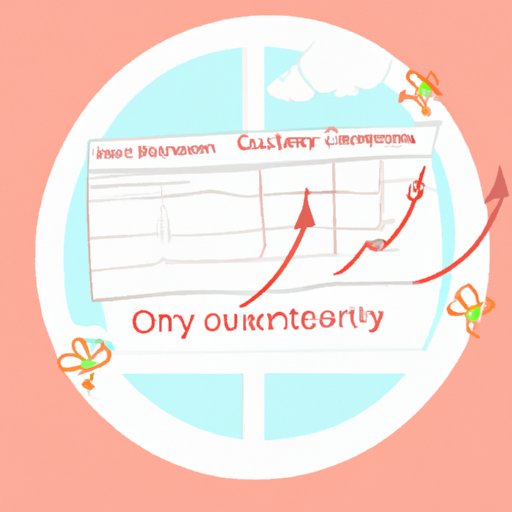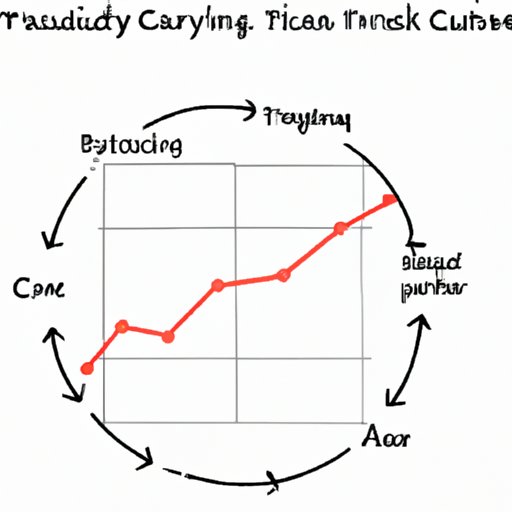
Introduction
Knowing when you are ovulating is critical for both reproductive health and pregnancy planning. For those trying to conceive, understanding when you are most fertile can significantly increase your chances of getting pregnant. And for others, tracking ovulation can help identify potential reproductive health issues. In this article, we will explore how to determine when you are ovulating and the benefits of tracking ovulation.
“5 Common Signs Your Body is Ovulating and What They Mean”
If you’re wondering how to know when you are ovulating, there are five common signs that you can look out for:
- Change in cervical mucus: The texture, color, and amount of cervical mucus can change during different stages of the menstrual cycle. During ovulation, the mucus is usually clear, thin, and stretchy.
- Increase in basal body temperature: Your basal body temperature (BBT) is your temperature when you are at rest. A slight increase in BBT after ovulation can indicate that ovulation has occurred.
- Change in cervical position: During ovulation, the cervix may shift higher and become softer and more open.
- Breast tenderness: Some women may experience breast tenderness or soreness around the time of ovulation due to hormonal changes.
- Increase in sex drive: Some women may experience an increase in libido during ovulation due to increased estrogen levels.
It’s important to note that not everyone experiences these symptoms and that they may be different from cycle to cycle.
“The Science Behind Ovulation: Understanding Your Menstrual Cycle”
In order to understand when you are ovulating, you need to know about the menstrual cycle. The menstrual cycle is the monthly cycle of hormonal changes that a woman’s body goes through in preparation for a potential pregnancy. The menstrual cycle typically lasts around 28 days, but can vary from woman to woman.
Ovulation occurs in the middle of the menstrual cycle and is when an egg is released from the ovary. The hormone responsible for triggering ovulation is called luteinizing hormone (LH). LH surges right before ovulation, and this surge can be detected with an ovulation predictor kit.
If fertilization does not occur, the lining of the uterus sheds during menstruation, and the cycle starts again.

“Tracking Your Cycle: A Guide to Determining Your Fertile Window”
Your fertile window is the period of time when sex can lead to pregnancy. This typically spans a few days before ovulation and one day after ovulation. For a 28-day cycle, the fertile window is around days 10-17. However, it’s important to remember that each woman’s cycle is different, and the fertile window can vary from cycle to cycle.
There are several methods you can use to track your menstrual cycle and determine your fertile window:
- Calendar method: This involves tracking the length of your menstrual cycle and pinpointing your fertile window based on past cycles.
- Basal body temperature method: This involves taking your temperature every morning before getting out of bed and tracking the changes in temperature throughout your cycle.
- Cervical mucus method: This involves tracking changes in the texture, color, and amount of cervical mucus throughout your cycle.
- Ovulation predictor kits: These are urine tests that detect the surge of LH in your body and can predict ovulation.
It may take some trial and error to find which method works best for you.
“Fertility Awareness Methods: How to Predict Ovulation Without an App”
Fertility awareness methods are another way to track ovulation without the use of an app. These methods involve monitoring your body’s signs and symptoms to determine your fertile window.
There are several fertility awareness methods you can use to predict ovulation:
- Basal body temperature: As mentioned earlier, tracking your basal body temperature can help identify when ovulation has occurred.
- Cervical mucus: Similarly, tracking changes in cervical mucus can provide insight into ovulation.
- Cervical position: Checking the position, firmness, and opening of your cervix can also help predict ovulation.
However, it’s important to remember that these methods require consistency and accuracy in tracking and interpreting data.
“Benefits of Knowing When You Are Ovulating: Improving Your Chances of Conception”
Knowing when you are ovulating can greatly improve your chances of getting pregnant. Couples can time intercourse during the fertile window to increase the likelihood of conception. For those undergoing fertility treatments, tracking ovulation can help with timing and adjusting treatment plans.
It’s important to keep in mind that other factors, such as age, overall health, and underlying medical conditions, can also affect fertility.
“Getting to Know Your Body: How to Spot Ovulation Like a Pro”
One of the best ways to know when you are ovulating is to become more in tune with your body’s natural signs and patterns. This involves tracking changes in cervical mucus, taking your basal body temperature, and being mindful of any other symptoms you may experience during your cycle.
By getting to know your body’s unique ovulation patterns, you can optimize your chances of conception and identify potential reproductive health issues. And remember, if you have any concerns or questions about your menstrual cycle or fertility, don’t hesitate to reach out to a healthcare provider.
Conclusion
Knowing when you are ovulating is crucial for anyone trying to conceive or simply maintain reproductive health. By understanding the signs of ovulation, tracking your menstrual cycle, and getting to know your body, you can optimize your chances of conception and identify any potential reproductive health issues.
Don’t be afraid to try out different methods and find what works best for you. And always remember the importance of tracking ovulation for reproductive health.




